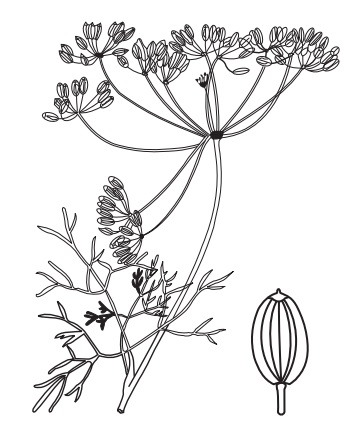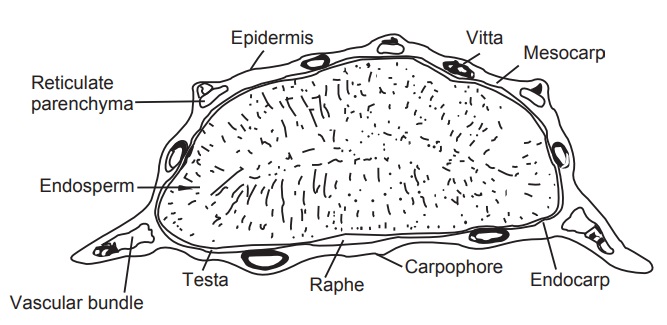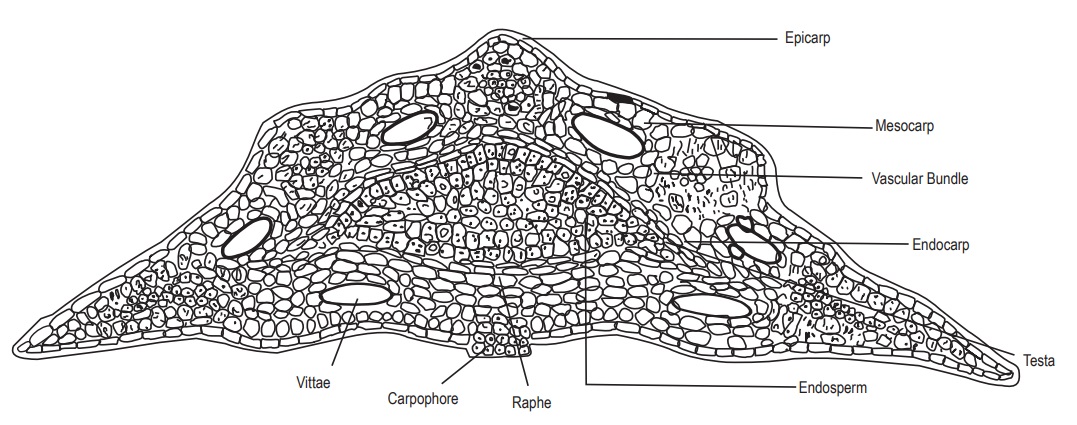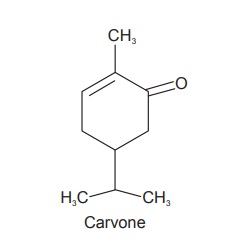Dill
| Home | | Pharmacognosy |Chapter: Pharmacognosy and Phytochemistry : Drugs Containing Volatile Oils
Dill consists of the dried ripe fruits of Anethum graveolens Linn., belonging to family Umbelliferae.
DILL
Synonyms
Fructus anethi, Anethum, European dill.
Biological Source
Dill consists of the dried ripe fruits of Anethum graveolens Linn., belonging to
family Umbelliferae.
Geographical Source
It is native of the Mediterranean region and Southern
Russia. Also grown in Italy, Spain and Portugal.
Cultivation and Collection
Dill is a hardy annual crop which grows ordinarily from 2 to
2.5 feet high. The seeds are sown in early spring in drills 10 inches apart on
soil with exhaustive fertility. The seeds are thinned out to leave 8 to 10
inches room each way, and the weeds are removed timely. The plant has more than
one stalk and its long, spindle-shaped root, growth is upright, its stems
smooth, shiny and hollow and in mid summer it bears flat terminal umbels with
numerous yellow flowers. The mowing of the seeds starts as the lower seeds
begin; with proper care taken not to loose any of the seeds due to shaking. The
loose sheaves are built into stacks of about 20 sheaves, tied together. In hot
weather, thrashing is done in the field, spreading the sheaves on a large
canvas sheet and beating them. The seeds are finally dried by spreading out on
trays in the sun or on moderate heat of a stove with occasional shaking.
Characteristics
Dill fruits are oval, compressed, winged with 4 mm in
length, about one-tenth inch wide and 1 mm thick. The fruits are yellowish or
slightly brown having with three longitudinal ridges on the back and three dark
lines or oil cells (vittae) between them and two on the flat surface. The taste
of the fruits somewhat resembles caraway (aromatic and characteristic). The
seeds are small in size, flat and lighter than caraway and have a pleasant
aromatic odour.

Microscopy
Dill has six vittae, of which four are present on the outer
surface and two on the commissural surface. Five vascular strands are present
in each of the primary ridge. Thin-walled epicarp is present and the mesocarp
has rounded parenchyma. The endosperm has thick-walled, elongated cells with
parquetry arrangement. Testa is brown in colour and the endosperm has
thick-wailed cellulosic parenchymatous cells with aleuron grains and oil
globules.

 Transverse section of Dill fruit (mericarp)
Transverse section of Dill fruit (mericarp)
Chemical Constituents
The fruit yields about 3.5% of the essential oil, about 20%
of fixed oil and protein. The essential oil is an aromatic liquid consisting of
a mixture of paraffin hydrocarbon and 40 to 60% of d-carvone along with
D-limonene and other terpenes.

Uses
Dill fruit and oil of Dill possess stimulant, aromatic,
carminative, and stomachic, with considerable medicinal value. Oil of Dill is
used in mixtures, preparation of Dill Water is used in the flatulence of
infants and also as a vehicle for children’s medicine. Oil of Dill is employed
for perfuming soaps.
Marketed Products
It is one of the ingredients of the preparations known as
Woodward’s Gripe water.
